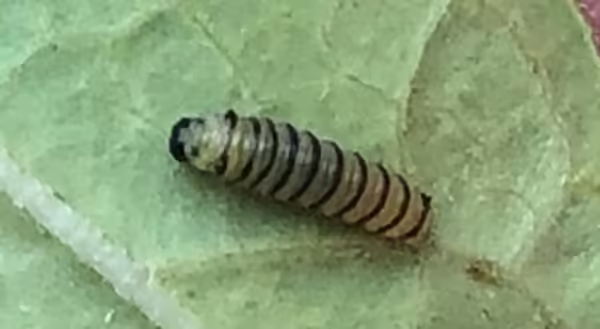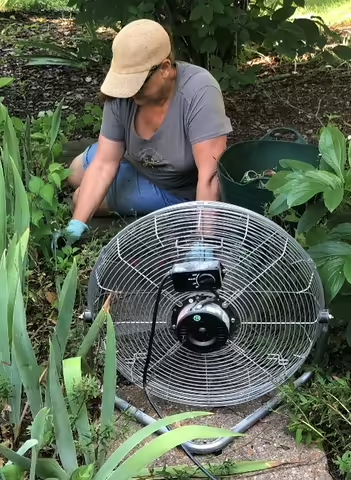
This is the second time of the year when the jungle needs the most weeding…the first being early spring. But unlike spring, it’s now hot and the mosquitoes are in abundance, not to mention the humidity makes the simplest task a chore. The weeding needs to continue though or the undesirables will reign supreme.
So on really hot days, in addition to my normal insulated water bottle, sunglasses, hat, sunscreen, gloves, weed prong, hand pruners, basket and iTunes, I have added a 100’ outdoor extension cord and a 20” industrial floor fan. A fan works amazingly well at keeping me cool enough to keep working, plus the mosquitoes don’t seem to bother me when the fan is blowing on me.
I just assumed the wind was interrupting their flight, but apparently my theory wasn’t quite right. Don’t get me wrong, even the strongest flyer is challenged by high wind at some point, but research suggest it is rather the dilution of the volatile compounds wafting from my skin that is preventing the female mosquitoes from even targeting in on me in the first place. Research also suggest adding a repellent makes fans even more effective.
Now most are like me and prefer not to wear insect repellent, but sometimes it is necessary, especially if you are in an area where ticks are present. I have my own personal pros and cons for each of the mosquito repellents I have tried over the years, but I keep coming back to picaridin. On me, it is very effective, last for hours without reapplication and it does not leave a dirt-and-debris-collecting oily sheen on my skin like DEET, oil of lemon eucalyptus or oil of citronella. One less slapped mosquito is one more snack for the local bats.
Happy dances abound! Some of my various milkweeds are full of monarch butterfly larvae, varying in age from just hatched (1st instar) to ready to pupate (5th instar). Of the five perennial milkweed species in my garden, the preference so far seems to be for butterfly weed (Asclepias tuberosa) and swamp milkweed (A. incarnata). I keep looking, but I have yet to identify any signs of egg laying or larvae on the whorled milkweed (A. verticillata), poke milkweed (A. exaltata) or prairie milkweed (A. sullivantii)…not even frass.
Another butterfly I specifically plant larval food for is the black swallowtail (Papilio polyxenes asterius). Female black swallowtails will lay eggs on carrots, parsley, celery, dill, fennel, Queen Anne’s lace and other members of the carrot family. Parsley is my plant of choice and I’ve learned the larvae (aka parsley worm) are pretty voracious, leaving little of the plant for my use if I don’t plant enough for all to enjoy. At a casual glance, the black swallowtail adult larvae could at first be mistaken for a monarch butterfly larvae, but host plant specificity should tell you almost immediately which is which. Monarch larvae are distinctly striped black, yellow and white and feature quite noticeable pairs of black tentacles both front and back. Most parsley worms are green with black bands that contain six spots each of bright yellow. They also lack the iconic black tentacles. But squeeze them a little as if you are going to pick them up, and all of a sudden a yellowish orange forked tongue-like protuberance called an osmeterium sprouts from their prothoracic segment in response to the perceived threat. An osmeterium is a defensive organ found on swallowtail butterfly (Papilionidae) larvae, and when everted, it has a pungent odor that repels insect predators. I haven’t harassed a parsley worm since I was a kid, so if you want a picture, you’ll have to check it out on the web. I guarantee it will suck you in to all the other beautiful members of the swallowtail family.

